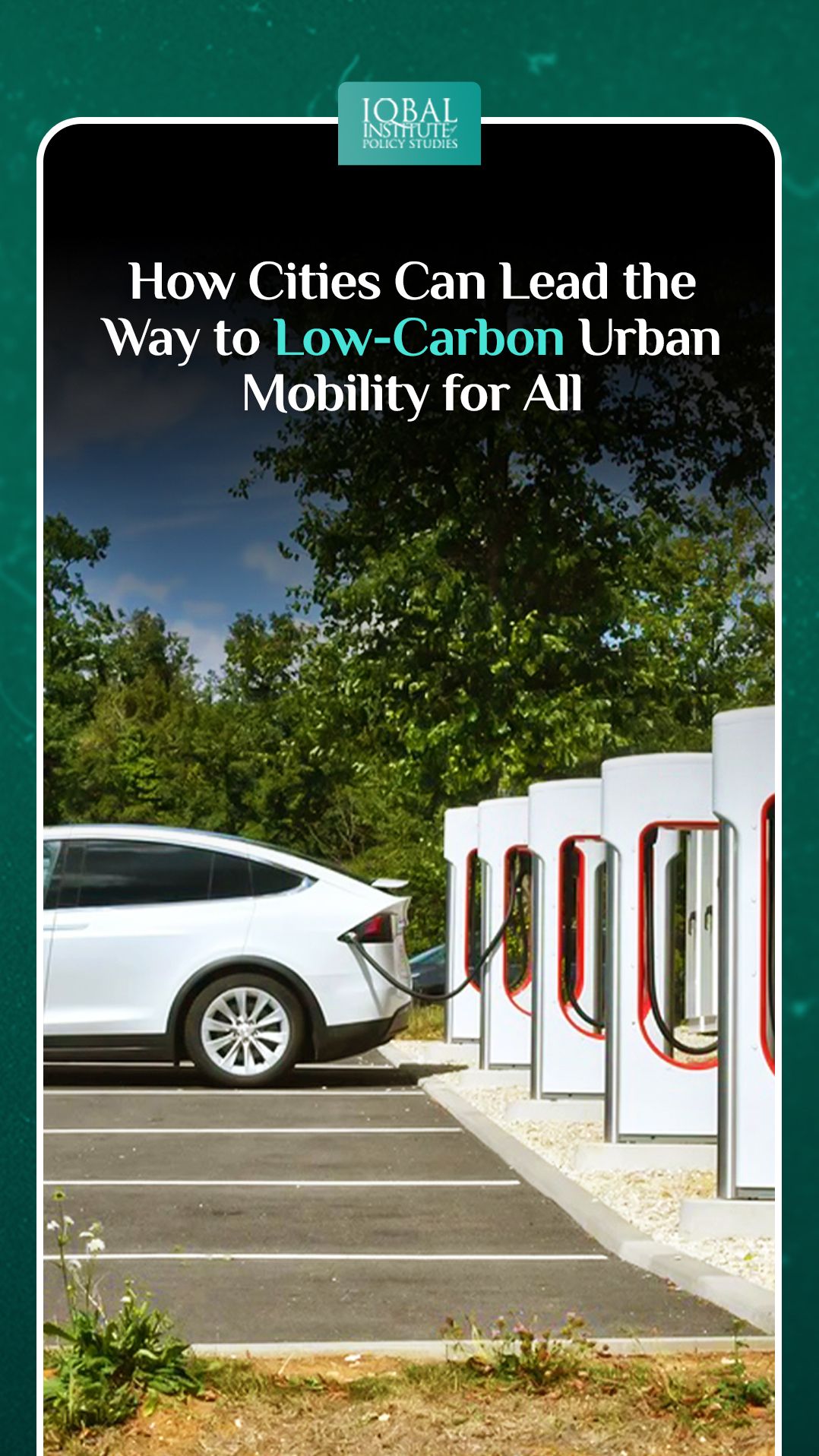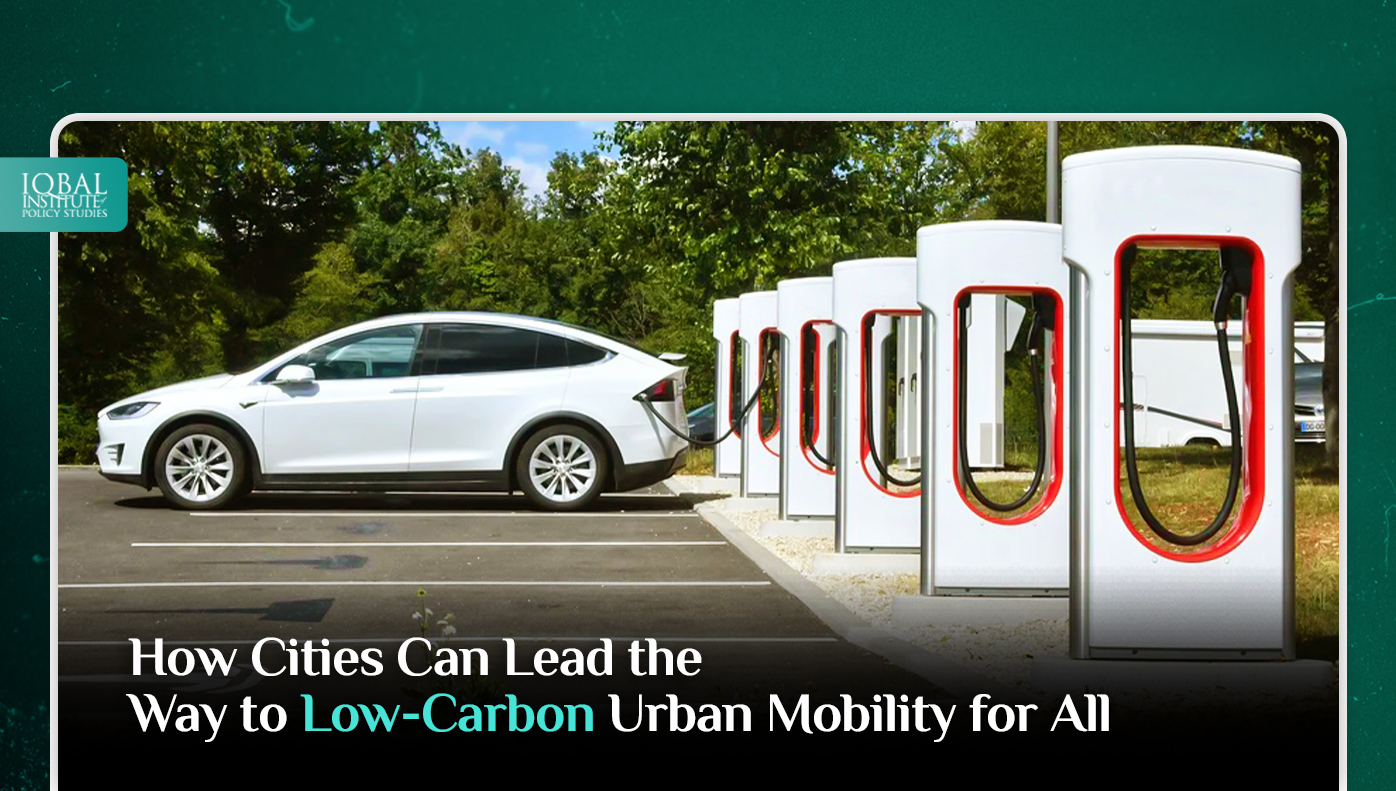The nexus between cities and mobility has never been more pertinent. With time cities evolved a distinct spatial structure based on motorised transportation, making them both a bedrock of global carbon emissions. Sub-standard urban and transport planning has led to polluted gridlock growth and high levels of air pollution. As a result, low-carbon urban mobility has emerged as a new perspective on urban planning, transportation planning, and city planning. With a rapidly urbanising world and acute climate change, the need for sustainable urban mobility is increasing. Low carbon-urban mobility is a critical component of global sustainability and profoundly impacts a city’s quality of life. Its implementation in cities addresses the issues caused by traffic congestion, air pollution, and a lack of parking. Moreover, urbanisation has been shaped by transportation infrastructures providing functional connectivity, implying interdependent urban functions related to trade, management, and production. Thus, it is imperative to adopt intelligent policies which enable the cities to provide low-carbon urban mobility for all.
Ways to Provide Low-carbon Urban Mobility in Cities
Land-use and Mobility Planning
Urbanisation is increasing at a rapid pace. Today, 55% of the world’s population lives in urban areas, a proportion that is expected to increase to 68% by 2050 (United Nations, 2018). Cities account for over 70% of global CO2 emissions, most of which come from industrial and motorised transport systems (Dasgupta, Lall, & Wheeler, 2022). The transport sector is responsible for 20% of global greenhouse gas (GHG) emissions (World Economic Forum, 2022). Therefore integrating land use and mobility planning is crucial to provide low-carbon urban mobility for all. Connecting land use and transport planning has long been a practical action of sustainable transport practitioners. Proper land-use planning can avoid the over-lapping of cities leading to a more compact one. It also enables a public transport system that better uses scarce land. In this context, while not a new technology or innovation, public transit in the form of buses might be vital for transforming small cities with meagre funds into thriving metropolises. Integrating not only land use and transportation planning but also the energy sector and energy efficiency can reap the several benefits of a systems approach.
Avoid, Shift and Improve Approach
Following the traditional avoid-shift-improve approach can lead to practising sustainability and achieving a sustainable transport system. This approach involves avoiding unnecessary travel by bringing services closer to the source of demand. One way of achieving this is through integrated land use and mobility planning. The next step to this approach is shifting to more efficient and sustainable transportation. For example, shifting from individual motorised car use to public transport systems like buses, trains etc. A typical passenger vehicle emits about 4.6 metric tons of CO2 annually (EPA, 2022). Shifting to public transportation can reduce carbon emissions by 2.2 tons yearly (United Nations, 2022). The last step of this approach is improving the efficiency and lowering the carbon intensity of fuel used, such as gasoline, diesel, biofuel, hydrogen, or electricity. Focusing on avoiding using demand-side management mapping of mobility and energy, there is a greater chance to efficiently achieve both by avoiding unnecessary travel and energy use.
Clean Energy Supply for Mobility
Climate-smart mobility options are concentrated in the developed world. The shift is slow and less tangible in the developing world. As a result, GHG emissions in low-income countries have more than doubled since 2000 (World Economic Forum, 2022). Therefore, cities worldwide should focus on using clean energy supply for mobility. This can be achieved effectively by including the energy sector for green mobility. For instance, shifting to electric mobility from motorised mobility reduce pollution. There are various electric vehicles, but all serve the common purpose of eliminating tail-pipe emissions and shifting the emission reduction burden to the electricity supply provider. In cities without access to electricity or with fossil-fuel-dominated electricity, pairing remote solar photovoltaic with electric two-wheelers or electric buses can provide sustainable urban mobility directly. Also, making the switch to green mobility will save fuel costs and reduce air pollution as well.
Implementing Fare Capping
Innovating mobility payments is becoming quite popular in cities worldwide as an approach to reducing mobility emissions. One common innovation in mobility payments is implementing fare capping. This system allows individuals to use the contactless payment system via credit, debit, prepaid card, smart device or OMNY card for public transport. Travellers only pay a set amount for travel each day or week without worrying about buying the right ticket or getting the best deal. According to Visa’s recent Future of Urban Mobility Survey, 61% of respondents said that capped fares would encourage them to take public transit more often than a non-fare capped system (World Economic Forum, 2022). Fare capping and contactless payments are attractive solutions for transit agencies looking to reduce costs and carbon emissions while providing equitable access to all riders, regardless of their socio-economic backgrounds. For this purpose, the government would need to implement intelligent policies that ensure that the contactless payment system is accessible to all.
Monitoring City Performance
Climate change is adversely impacting various regions across the globe. Thus, there is a critical need for cities and the transport sector to reduce greenhouse gas emissions. Utilising satellite data to monitor and assess whether a city is under or overperforming in reducing carbon emissions is crucial for analysing urban emissions performance. This valuable information can help to provide a broad overview of the development of emissions across the cities, formulate innovative and scaled solutions and intelligent policies in achieving an all-inclusive urban mobility system, investigate carbon emissions events precisely, and encourage people to make a positive shift in their behaviour by inclining towards green transport. This method is efficient and inexpensive as well. Thus, it can be implemented in low and middle-income countries as well.
The Way Forward
The government and stakeholders should work together to develop intelligent policies focusing on using low-carbon mobility in every city and ensuring its accessibility to all.
Addressing policy gaps by coordinating efforts through public-private partnerships by tracking relevant policies and regulations in key countries is crucial.
Increase capacity building in spatial planning for government agencies to maximise energy and transport solutions synergies at an early stage of urban planning.
The government should invest in renewable energy and sustainable transport projects to decarbonise cities and support the growth of new low-carbon mobility models.
Identify and foster influential individuals, including mayors, for intangible aspects such as behavioural and cultural shifts that can support improved access and utilisation of low-carbon urban mobility.
Conclusion
Cities and the transport sector are prime contributors to radical climate change. Sustainable transformation in one of them can lessen the carbon emissions from the atmosphere. Since cities are planned while considering mobility, it is essential to design cities to lead to low-carbon urban mobility for all. It will benefit not only the environment but the overall well-being of the communities. Low-carbon urban mobility is the need of the hour. If necessary actions are not taken now, it may aggravate the situation even more.
References
Dasgupta, S., Lall, S., & Wheeler, D. (2022, January 5). Cutting global carbon emissions: where do cities stand? Retrieved from World Bank Blogs: https://blogs.worldbank.org/sustainablecities/cutting-global-carbon-emissions-where-do-cities-stand
EPA. (2022, June 30). United Nations Environmental Protection Agency. Retrieved from https://www.epa.gov/greenvehicles/greenhouse-gas-emissions-typical-passenger-vehicle
United Nations. (2018, May 16). Retrieved from https://www.un.org/development/desa/en/news/population/2018-revision-of-world-urbanization-prospects.html
United Nations. (2022). Retrieved from https://www.un.org/en/actnow/transport#:~:text=If%20your%20destination%20is%20too,carbon%20emissions%20annually%20per%20individual.
World Economic Forum. (2022, June 30). Retrieved from https://www.weforum.org/agenda/2022/06/green-transport-and-cleaner-mobility-are-key-to-meeting-climate-goals
World Economic Forum. (2022, June 30). Green transport and cleaner mobility are key to meeting climate goals. Retrieved from World Economic Forum: https://www.weforum.org/agenda/2022/06/green-transport-and-cleaner-mobility-are-key-to-meeting-climate-goals
World Economic Forum. (2022, September 19). Innovation in mobility payments is keeping people moving while protecting the planet. Retrieved from World Economic Forum: https://www.weforum.org/agenda/2022/09/mobility-payments-protecting-the-planet/



Leave a Reply